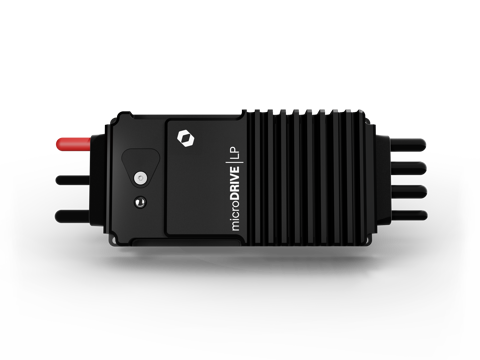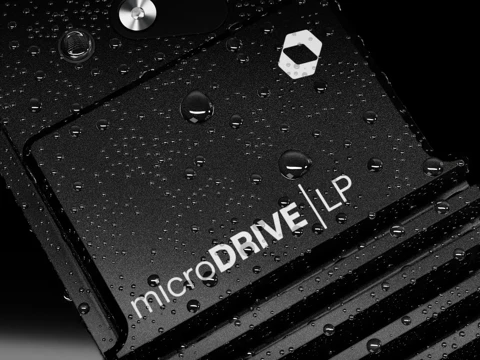Will it work for your aircraft?
Our datasheet is filled with performance data to help you determine if microDRIVE LP is a good fit for you.
Our lightest IP67 motor controller.
DroneCAN-first design, optimised for aircraft integration.
Powered by Hargrave's next-gen GateKEEPER core.
OPERATING VOLTAGE
CONTINUOUS CURRENT
BASE WEIGHT
PROTECTION
microDRIVE LP gives you the choice between our groundbreaking high-efficiency FOCAL algorithm and our rapid-response Trapezoidal drive, so you can get the most out of your motor for your vehicle.
It's more connected to your motor than ever. Temperature and three hall effect sensor inputs open a world of possibilities, including:

microDRIVE LP takes advantage of the full DroneCAN specification to enable you to reliably deploy your system at scale. In addition to robust throttle commands, you can configure 60+ parameters and update firmware from your flight computer, ensuring every ESC is always performing exactly as expected.
DroneCAN telemetry lets you gather critical data like current, voltage and RPM from your ESCs in real-time. microDRIVE LP constantly monitors and reports status so you can catch issues before they occur.
Bidirectional DShot and PWM are also supported.

Whether you're flying in dusty deserts, torrential downpours or over wide open ocean, the microDRIVE LP is well protected against the elements.
Featuring an IP67 rating, the unified housing is dust-proof and can be submerged at 1 m (3 ft) depth for 30 minutes, enabling the highest reliability in the most challenging environments.
The enclosure also acts as the thermal management solution, deeply integrated with the electronic design to extract as much power as possible.


Our datasheet is filled with performance data to help you determine if microDRIVE LP is a good fit for you.
microDRIVE LP harnesses our deep vertical integration across hardware, firmware and manufacturing to deliver the highest-performing, most robust motor controller we've ever built. It incorporates everything we've learnt over the past decade of building ESCs for some of the most advanced uncrewed vehicles in the world.